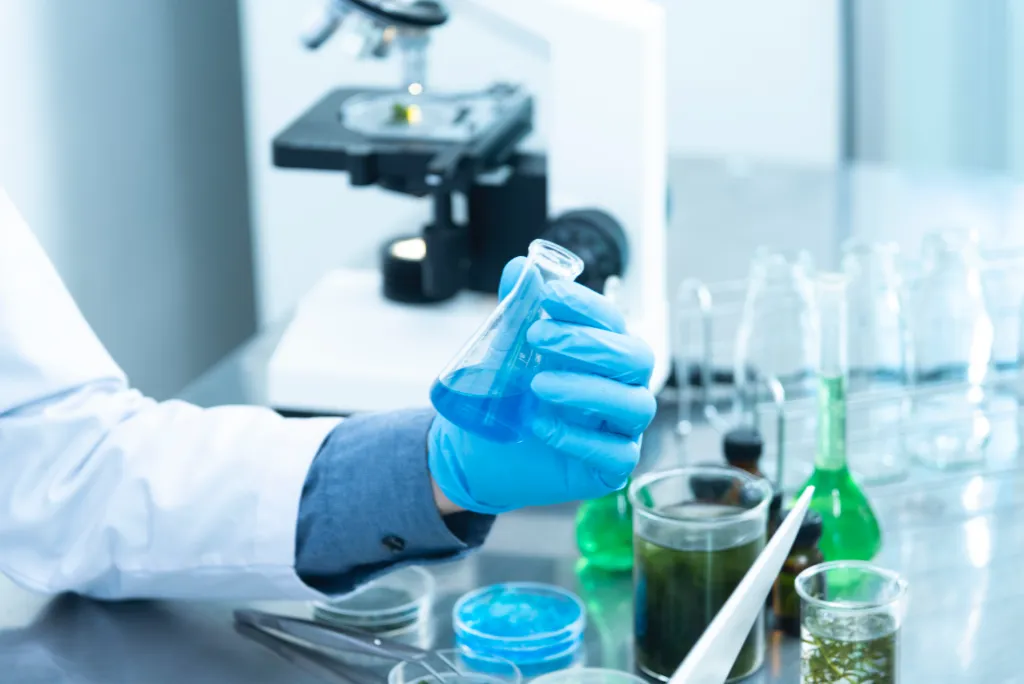Lab-grown diamonds are becoming increasingly popular in the jewelry industry. These diamonds offer a range of benefits over traditional, mined diamonds. This article will explore the benefits of choosing lab-grown diamonds for your jewelry.
Table of Contents
What are Lab-Grown Diamonds?

Scientists create lab-grown diamonds in a laboratory instead of relying on their natural formation deep within the Earth’s crust. Through controlled processes in a laboratory setting, scientists cultivate these diamonds, providing an alternative to traditionally mined diamonds.
Through advanced technological processes, scientists are able to replicate the natural conditions that facilitate diamond growth. This innovative approach allows for the production of diamonds with the same chemical composition and physical properties as their mined counterparts.
In the lab, researchers employ two primary methods to produce lab-grown diamonds: High-Pressure High-Temperature (HPHT) and Chemical Vapor Deposition (CVD).
In the HPHT method, they place a small diamond seed under high pressure and expose it to high temperatures. This process facilitates the formation and crystallization of carbon atoms, resulting in the growth of a larger diamond.
The CVD method involves introducing carbon-rich gases into a controlled chamber, where the carbon atoms accumulate and bond to create a diamond over time.
Lab-grown diamonds undergo the same grading process as mined diamonds, adhering to the 4Cs: carat weight, color, clarity, and cut. This ensures that lab-grown diamonds meet the industry standards for quality and can be classified and evaluated accordingly.
Choosing lab-grown diamonds offers a transparent and traceable alternative to mined diamonds. With clear origins and controlled production processes, lab-grown diamonds provide consumers with a guarantee of ethical sourcing and enable them to make informed decisions when purchasing jewelry. These diamonds not only offer a responsible choice, but they also embody the beauty and elegance that diamonds are renowned for.
Environmental Benefits of Lab-Grown Diamonds

When it comes to the environmental impact, lab-grown diamonds emerge as a more sustainable and eco-friendly choice compared to mined diamonds. The process of mining diamonds involves extensive digging and excavation, leading to significant deforestation, where vast areas of forests are cleared to access diamond deposits. This destruction of natural habitats disrupts ecosystems and threatens biodiversity.
Moreover, the mining process contributes to soil erosion as heavy machinery and extraction techniques disturb the soil structure, making it prone to erosion by wind and water. This can result in the loss of topsoil, essential for supporting vegetation and agricultural activities. Additionally, mining operations often require large quantities of water, leading to water pollution through the discharge of toxic chemicals and heavy metals into nearby water sources.
By choosing lab-grown diamonds, you actively contribute to reducing the demand for mined diamonds and the detrimental effects associated with mining. Lab-grown diamonds are created in controlled laboratory environments using advanced technology, bypassing the need for destructive mining practices. This means that no forests are razed, no soil is displaced, and no water sources are contaminated in the process.
Opting for lab-grown diamonds demonstrates your commitment to environmental conservation and sustainable practices. By supporting this alternative, you play a part in preserving natural habitats, conserving resources, and mitigating the adverse effects that traditional diamond mining has on the planet. By making a conscious choice, you can make a significant and positive impact on the environment.
Ethical Benefits
Mined diamonds can be associated with human rights abuses, including forced labor and child labor. In contrast, lab-grown diamonds offer a significant advantage in terms of ethical sourcing. These diamonds are produced in a controlled environment, eliminating the risk of human rights abuses.
By choosing lab-grown diamonds, you make a conscious decision to support ethically sourced jewelry. This consideration holds immense importance for conscientious consumers who strive to make responsible purchasing decisions, ensuring that their jewelry aligns with their values and contributes to a more equitable and just industry.
– Sustainable Silver: An Alternative to Traditional Sterling Silver
– The Beauty of Upcycled Glass in Jewelry Making
– The Future of Jewelry Making: Biodegradable Materials
Cost and Quality Benefits of Lab-Grown Diamonds

Cost Benefits
Lab-grown diamonds offer remarkable cost benefits compared to mined diamonds. The production process of lab-grown diamonds requires fewer resources, leading to a lower price point.
By choosing lab-grown diamonds, you can enjoy substantial savings without compromising on the quality and beauty of the gemstone.
This makes lab-grown diamonds a highly appealing choice for consumers who are mindful of their budget.
Quality and Affordability
Despite the lower cost, lab-grown diamonds are comparable in quality and beauty to their mined counterparts.
They possess the same physical and chemical properties, including clarity, color, and brilliance. In fact, lab-grown diamonds may even exhibit superior characteristics due to their controlled growth process.
This means you can acquire a high-quality diamond at a more affordable price, allowing you to make your desired jewelry purchases within your budget.
Accessible Luxury
The cost benefits of lab-grown diamonds make them an accessible option for individuals seeking affordable luxury.
Whether you are shopping for an engagement ring, a pendant, or a pair of earrings, lab-grown diamonds offer an opportunity to acquire exquisite jewelry without the higher price tag associated with mined diamonds.
With lab-grown diamonds, you can embrace elegance and sophistication while maintaining financial prudence.
FAQ
- What is the difference between lab-grown and mined diamonds?
Lab-grown diamonds are created in a laboratory using advanced technology, while mined diamonds are found in the earth and extracted through mining. - How are lab-grown diamonds produced?
Lab-grown diamonds are produced using two methods – High-Pressure High-Temperature (HPHT) and Chemical Vapor Deposition (CVD). Both methods involve creating the right conditions for diamond growth in a controlled environment. - Are lab-grown diamonds real diamonds?
Yes, lab-grown diamonds are real diamonds. They have the same chemical composition and physical properties as mined diamonds. - Are lab-grown diamonds less valuable than mined diamonds?
Lab-grown diamonds are typically less expensive than mined diamonds, but this does not necessarily mean they are less valuable. The value of a diamond depends on its quality, size, and other factors. Lab-grown diamonds can be just as valuable as mined diamonds, depending on their quality. - Can you tell the difference between lab-grown and mined diamonds?
It is difficult to tell the difference between lab-grown and mined diamonds with the naked eye. However, trained gemologists can identify the differences using specialized instruments.
Final Thoughts
Lab-grown diamonds offer a range of benefits over traditional, mined diamonds. They are more environmentally friendly, ethically sourced, cost-effective, and of high quality. Consider choosing lab-grown diamonds for your next jewelry purchase to enjoy these benefits and more. By making responsible purchasing decisions, you can support sustainable and ethical practices in the jewelry industry.
